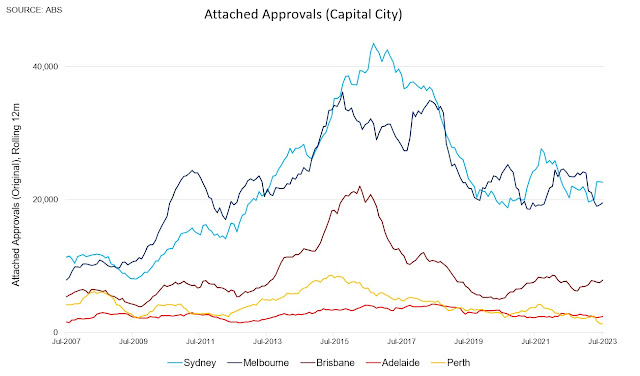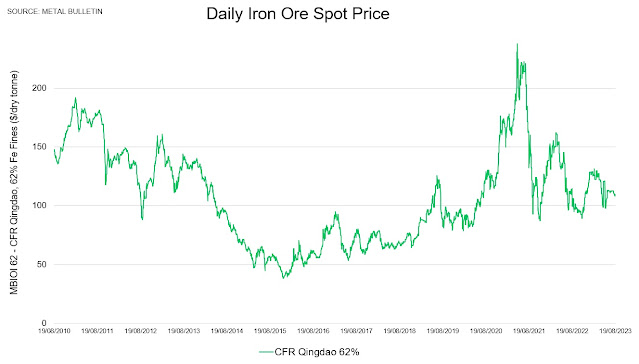Wages growth misses again
Wages growth has been extraordinarily slow as compared to what had previously been expected.
In the June quarter the wage price index increased 0.8 per cent for the 3rd consecutive quarter, taking annual growth down a notch to 3.6 per cent.
The recent trend obviously suggests we'll be slowing further on the annual growth measure next quarter as well.
In real terms, after inflation, wages growth was minus 2.4 per cent over the financial year.
The share of jobs receiving a pay rise also fell in the June quarter.
Private sector wages growth (3.80 per cent) has at least fared somewhat better than the dismal public sector growth (3.07 per cent) over the past year.
At the state level the strongest growth was in Western Australia, at 4.2 per cent, but the peak has come in lower than previously thought likely, and unemployment will rise fairly quickly from here as the new migrants pour in.
Interest rates to fall next year
Soft and softening wages growth due to record high immigration is a key factor which differentiates Australia from, say, the UK (where earnings growth accelerated to 7.8 per cent last month).
Another factor which has been different from the US experience is that most borrowers in Australia are on variable mortgage rates or short-term fixed rate deals, meaning that the transmission of monetary policy is comparatively far swifter in Australia.
Economists including CBA are expecting a salvo of interest rate cuts next year totaling approximately 100 basis points, with some economists expecting 150 basis points of rate cuts by mid-2025.
With markets pricing for lower interest rates ahead, it now makes no sense at all for borrowers to be stress-tested for 10 per cent mortgage rates (and sometimes higher), and the extraordinary minimum 300 basis points lending assessment buffer should be revisited in due course.
---
SQM Research reported steady national residential vacancy rates for July at a tight 1.3 per cent.
There were declines in Sydney (to 1.6 per cent) and Perth (to just 0.5 per cent).
There was a sharp acceleration in asking rents in Melbourne, where the annual growth in asking rents (at 20.3 per cent) now exceeds Sydney (20 per cent).
There are also proposals afoot to increased land taxes for landlords in Victoria and to freeze rents, which will only serve to tighten the rental supply in the medium term.
Misguided policy, and the Housing Industry Association forecasts home building to slow further over the year ahead.


















































